Placeholder: After DeFi, what is the next era of blockchain?
Original title: Onchain Finance Is Thriving; What's Next?
Original author: Mario Laul
Decentralized public blockchain networks have been around for about 15 years, and the crypto-assets related to them are currently experiencing their fourth major market cycle. Over the years, and especially since the launch of Ethereum in 2015, we have spent a lot of time and resources building theory and developing applications based on these networks. While these networks have made significant progress in financial use cases, other types of applications have struggled, primarily due to the constraints imposed by “decentralization” on providing a scalable and silky user experience. Complexity, and fragmentation of different ecologies and standards. However, recent technological advancements have made blockchain applications, both within and outside the industry, not only more feasible, but more necessary than ever.
The early days of blockchain adoption were driven by a rather narrow definition of its core functionality: enabling the secure issuance and tracking of digital assets without reliance on centralized intermediaries such as traditional financial or government agencies. . Whether we’re talking about blockchain-native fungible tokens like BTC and ETH, the on-chainization of off-chain assets like national currencies and traditional securities, or digital products or collections representing artwork, game props, or any other kind For non-fungible tokens (NFTs), the blockchain will track these assets and allow anyone with an internet connection to trade them globally without touching a centralized financial track. Given the size and importance of the financial industry, especially in the context of increasing digitization, globalization and financialization, this alone is enough to prove that blockchain is a very revolutionary technology and enough to attract global attention .
Within this narrow framework, in addition to the underlying asset ledger and the decentralized network that maintains them, there are currently five blockchain applications with significant product-market adaptability: For issuing tokens Applications for tokens, applications for storing private keys and transferring tokens (wallets), applications for trading tokens (including decentralized exchanges DEX), applications for lending tokens, and making tokens relative to Applications of traditional fiat currencies with predictable value (stablecoins). At the time of writing, the number of crypto assets listed on crypto market data aggregator Coingecko has exceeded 13,000, with a total market capitalization of approximately $2.5 trillion and daily trading volume of more than $10 billion. Nearly half of this value is concentrated in a single asset, BTC, with the vast majority of the other half spread across the top 500 assets. However, the long tail of tokens is long and growing, especially after NFTs are also included, which shows how much demand there is for blockchain as a digital asset ledger.
According to recent statistics, approximately 420 million people around the world hold crypto tokens, although many of them may never or rarely interact with decentralized applications. A report from hardware wallet maker Ledger suggests that its Ledger Live software has about 1.5 million monthly active users, while software wallet providers MetaMask and Phantom claim about 30 million and 3.2 million monthly active users respectively. Combined with the daily DEX trading volume of approximately US$50-10 billion, the locked value of the on-chain lending market of approximately US$30-35 billion, and the market value of stablecoins of approximately US$130 billion, it can be seen from these figures that relative to traditional finance and As far as fintech is concerned, the current level of adoption of the five categories of applications mentioned above is still low, but it is still important. Granted, these numbers should be considered in the context of the recent surge in crypto asset prices, but as blockchain regulation becomes more sophisticated (with the approval of spot Bitcoin ETFs and tailor-made regulatory frameworks like Europe’s MiCA), they may also Continue to attract new capital and users, especially in the context of increasing integration with traditional financial assets and institutions.
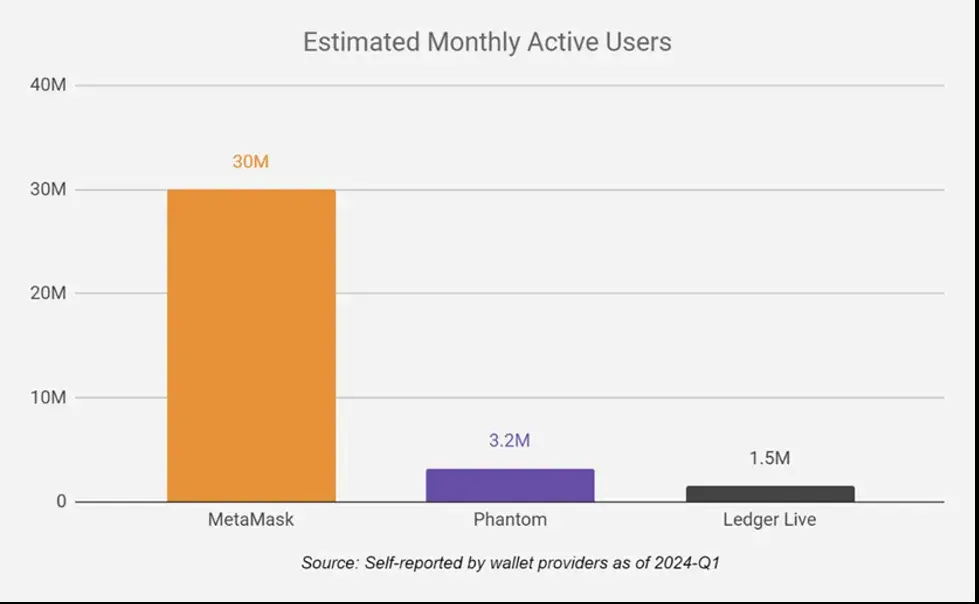
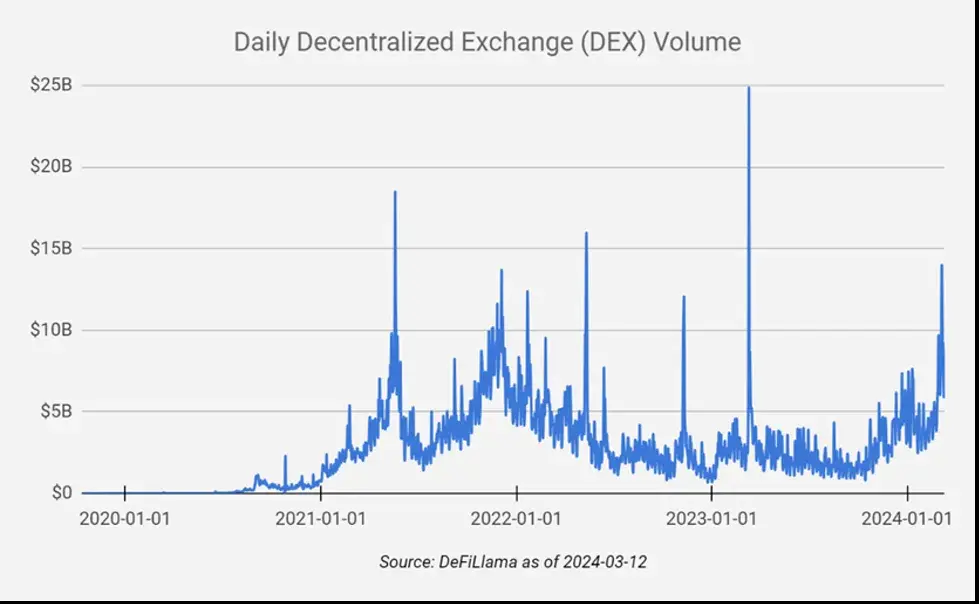
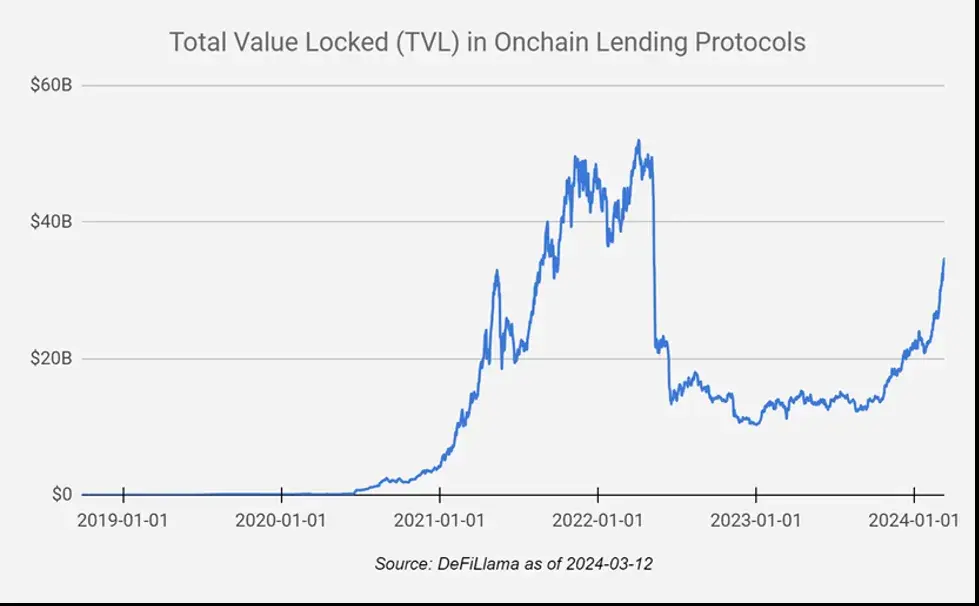
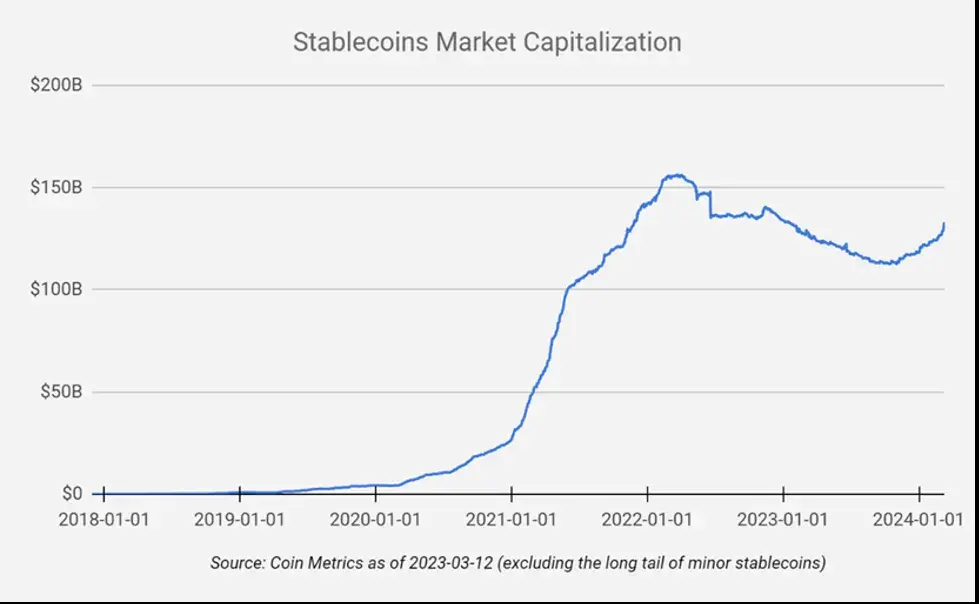 ##
##
However, financial applications such as tokens, wallets, DEX, lending and stablecoins are just the tip of the iceberg of applications that can be built on universal programmable blockchains. Measuring blockchain adoption should not limit it to the narrow scope of being an enhanced asset ledger, but rather put it into broader contexts, such as as a more general replacement for centralized databases and web application platforms. . The number of global developers is now approaching about 30 million, yet according to Electric Capital’s latest Crypto developer report, there are still less than 25,000 monthly active developers on public blockchains, with only about 7,000 of them holding full-time roles. These numbers indicate that blockchain currently lags far behind traditional software platforms in terms of attracting developers. However, the number of developers with at least 2 years of Crypto development experience has been increasing for five consecutive years, and the number of contributors in each ecosystem is more than 1,000. In addition, Crypto has attracted more than 90 billion US dollars in venture capital in the past 6-7 years. . Although the vast majority of these funds are indeed used to build the underlying blockchain infrastructure and core decentralized finance (DeFi) services (which are known as the pillars of the emerging on-chain economy), it can also be seen that the capital's investment in Africa There is also considerable interest in financial, utility-focused application areas such as online identity, gaming, social networks, supply chain, IoT, and digital governance, to name a few. So, how successful are these types of applications in the most mature and widely used smart contract blockchains?
There are three main indicators that can measure the market's interest in specific blockchains and applications: daily active addresses, daily transaction volume, and daily fee expenditures. An important factor to understand before interpreting these indicators is that these indicators can easily be artificially inflated, so these figures can only be used as a very rough estimate. According to on-chain data aggregator Artemis, six networks stood out in all three metrics during the past 12 months (each network ranked in the top 6 in at least two metrics): BNB Chain, Ethereum, NEAR Protocol, Polygon (PoS), Solana and TRON. Four of the networks (BNB, Ethereum, Polygon, TRON) are using the Ethereum Virtual Machine (EVM) and therefore benefit from Solidity (a programming language created specifically for EVM) tool versatility and network effects. Both NEAR and Solana have their own native execution environments. Both are mainly based on Rust. Although more complex, Rust has various performance and security advantages compared to Solidity, and it is also booming outside the blockchain industry. ecology.
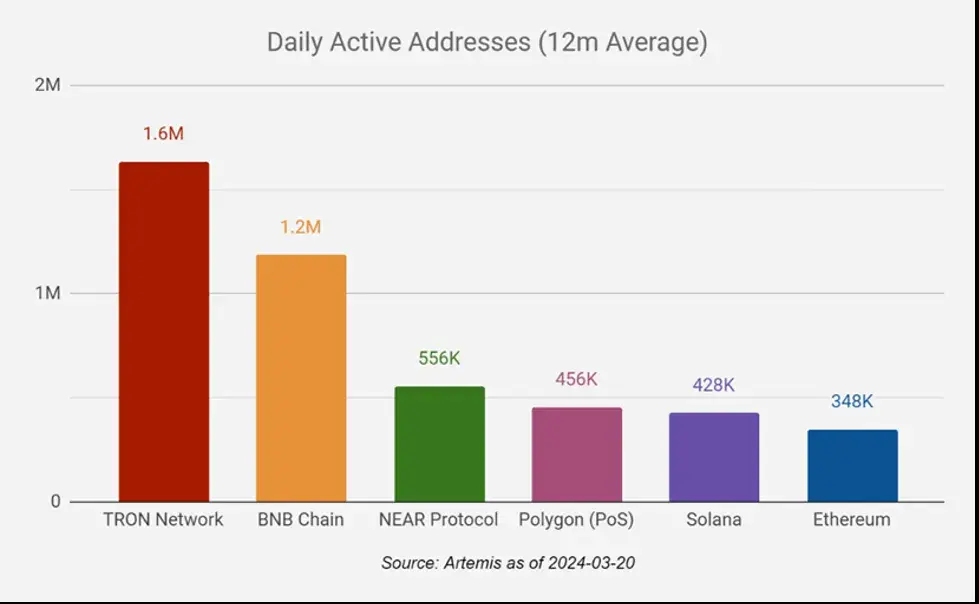
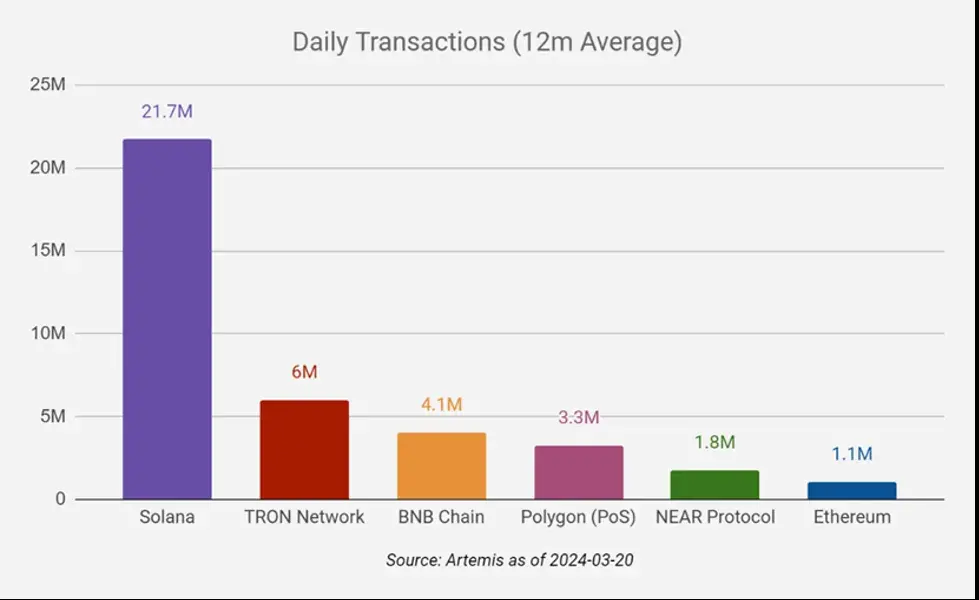
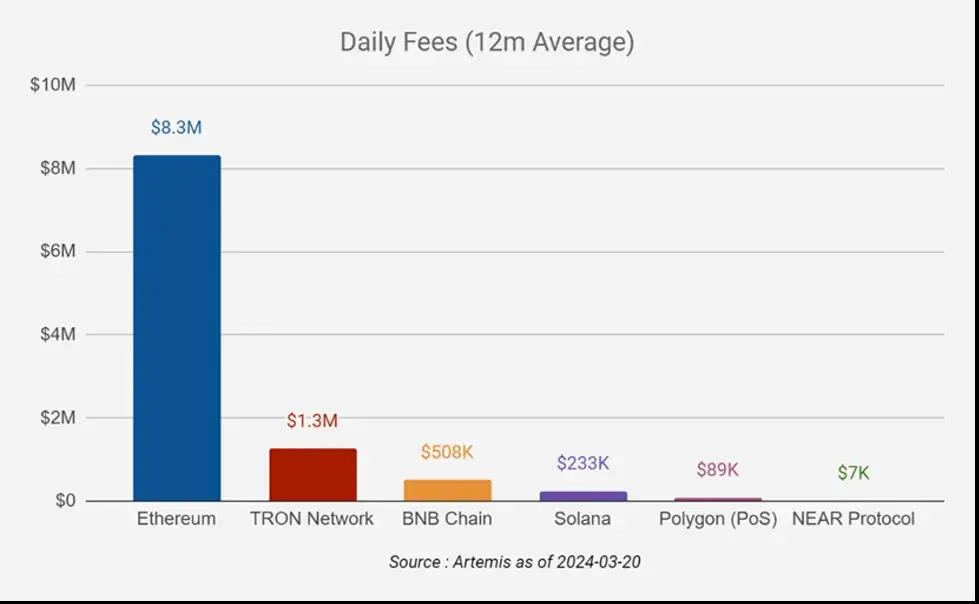
On-chain activity across all six networks is focused on the top 20 applications , the daily active addresses (inaccurate data) of apps after the top 20 will drop to thousands or even hundreds, depending on the network. As of March 2024, taking an average day as an example, the top 20 applications accounted for 70-100% of the three indicators considered, among which Tron and NEAR have the highest concentration, and Ethereum and Polygon have the lowest . Across all networks, the top 20 applications are mainly composed of those related to tokenization, wallets and DeFi (exchanges, lending, stablecoins), with few or very few applications that do not fall into this category (each Network 0-4). Apart from bridges for transferring value between different blockchains and NFT trading markets (both of which should be included in the asset transfer and exchange category), the few remaining outliers are usually gaming or social applications. However, in 5 of all 6 cases the app's share of overall network activity is very low, for example Polygon's best figure is less than 20%, but often less than 10%. The only exception is Near, but its usage is very concentrated, with two applications Kai-Ching and Sweat accounting for about 75-80% of all on-chain activity, and a total of less than 10 applications with more than 1,000 daily active addresses.
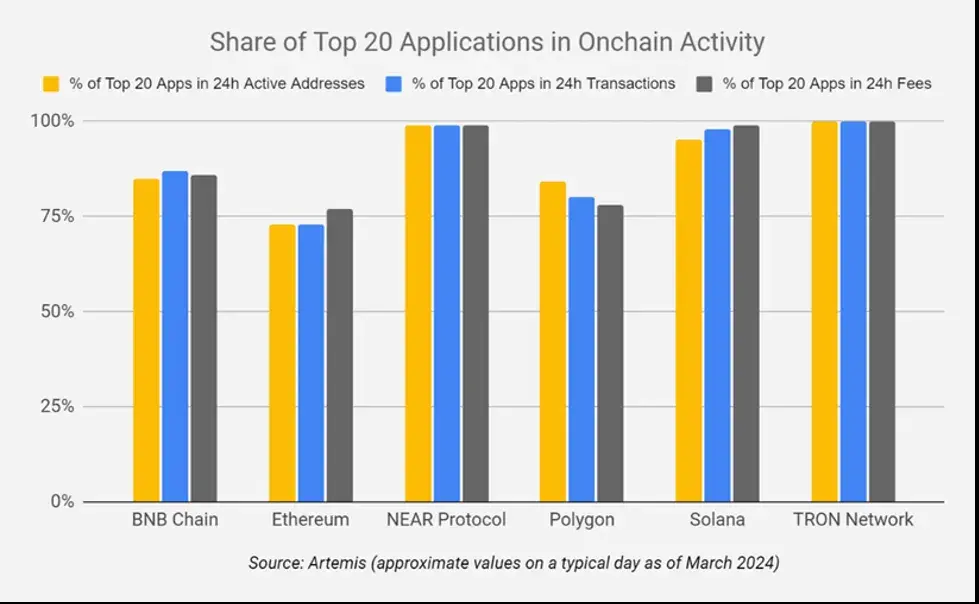
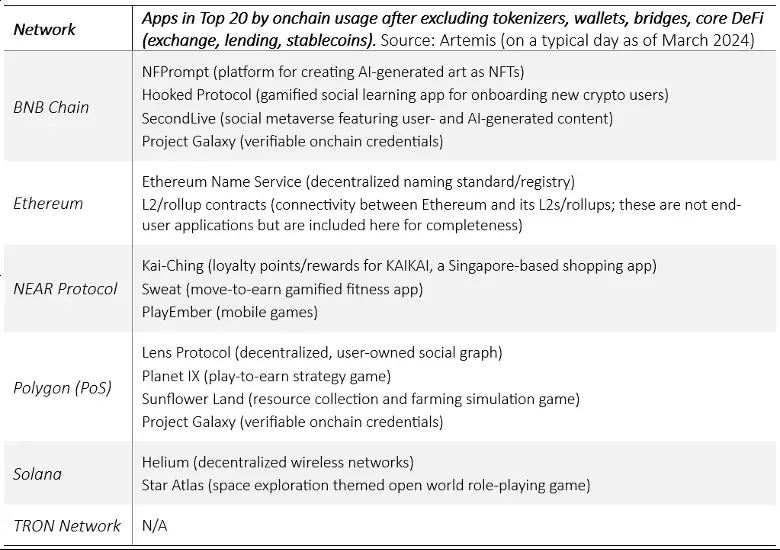
All of the above reflects the legacy of the early development of blockchain and further solidifies its core value proposition as a digital asset ledger. The common criticism of blockchains’ lack of applications is clearly unfounded, as their primary function is the programmable financialization and secure settlement of tokenized value. Asset offerings, wallets, DEXs (or broader exchanges), lending protocols, and stablecoins have such strong product-market fit simply because they are so closely aligned with that purpose. Given the relatively simple business logic and strong positive feedback loops between these five blockchains, it is not surprising that the first generation of leading smart contract blockchains tended to primarily serve applications in this narrow financial use case. And, since the uses of many blockchain applications with non-financial utility are also ultimately related to tokenization and financialization, these five financial applications will likely still dominate the major general-purpose blockchains in the long term.
But what does this mean for the more ambitious vision of blockchain as a universal application platform? Over the years, the two biggest challenges facing the Crypto industry have been 1) blockchain scalability (both throughput and cost), and 2) enabling a simple user experience without sacrificing the decentralization and security guarantees of the underlying infrastructure . In terms of scalability, two solutions are usually adopted, a more integrated architecture and a more modular architecture. Solana belongs to the former, while Ethereum and its Layer-2 (Rollups) ecosystem demonstrate the latter. In fact, these two approaches are not mutually exclusive and there is considerable overlap and convergence between them. But more importantly, it depends on whether the application in question needs to share state with other applications and maximize composability, or is less concerned with seamless interoperability but seeks to benefit from complete sovereignty over its governance and economy Both approaches are now mature options for scaling blockchains.
In addition, we have made significant progress in improving the end-user experience of blockchain applications. Specifically, thanks to advances in technologies such as account abstraction, chain abstraction, proof aggregation, and light client verification, there are now ways to securely remove some of the major user experience hurdles that have plagued Crypto for years, such as having to keep private keys or mnemonics terms, having to pay transaction fees, limitations on account recovery, and over-reliance on third-party data providers, especially in multi-chain situations. Combined with the increasing number of decentralized data storage, verifiable off-chain computation and other back-end services to enhance the functionality of on-chain applications, the current and upcoming application development cycles will prove whether blockchain will become the global financial The main role of infrastructure is still as a more general role. Given the vast number of application scenarios outside of DeFi, these use cases will benefit from greater resiliency and better user-centric control of data and transactions, such as online identity and reputation, publishing, gaming, wireless and IoT Physical infrastructure such as (DePin), decentralized science (DeSci), and solving the growing authenticity problem of AI-generated content. These use cases have always been attractive in theory, and now they are becoming feasible in practice. .
The above is the detailed content of Placeholder: After DeFi, what is the next era of blockchain?. For more information, please follow other related articles on the PHP Chinese website!

Hot AI Tools

Undresser.AI Undress
AI-powered app for creating realistic nude photos

AI Clothes Remover
Online AI tool for removing clothes from photos.

Undress AI Tool
Undress images for free

Clothoff.io
AI clothes remover

AI Hentai Generator
Generate AI Hentai for free.

Hot Article

Hot Tools

Notepad++7.3.1
Easy-to-use and free code editor

SublimeText3 Chinese version
Chinese version, very easy to use

Zend Studio 13.0.1
Powerful PHP integrated development environment

Dreamweaver CS6
Visual web development tools

SublimeText3 Mac version
God-level code editing software (SublimeText3)

Hot Topics
 1378
1378
 52
52
 okx Ouyi Exchange web version enter link click to enter
Mar 31, 2025 pm 06:21 PM
okx Ouyi Exchange web version enter link click to enter
Mar 31, 2025 pm 06:21 PM
1. Enter the web version of okx Euyi Exchange ☜☜☜☜☜☜ Click to save 2. Click the link of okx Euyi Exchange app ☜☜☜☜ Click to save 3. After entering the official website, the clear interface provides a login and registration portal. Users can choose to log in to an existing account or register a new account according to their own situation. Whether it is viewing real-time market conditions, conducting transactions, or managing assets, the OKX web version provides a simple and smooth operating experience, suitable for beginners and veterans. Visit OKX official website now for easy experience
 What is Ouyi for? What is Ouyi
Apr 01, 2025 pm 03:18 PM
What is Ouyi for? What is Ouyi
Apr 01, 2025 pm 03:18 PM
OKX is a global digital asset trading platform. Its main functions include: 1. Buying and selling digital assets (spot trading), 2. Trading between digital assets, 3. Providing market conditions and data, 4. Providing diversified trading products (such as derivatives), 5. Providing asset value-added services, 6. Convenient asset management.
 gate.io latest registration tutorial for beginners
Mar 31, 2025 pm 11:12 PM
gate.io latest registration tutorial for beginners
Mar 31, 2025 pm 11:12 PM
This article provides newbies with detailed Gate.io registration tutorials, guiding them to gradually complete the registration process, including accessing the official website, filling in information, identity verification, etc., and emphasizes the security settings after registration. In addition, the article also mentioned other exchanges such as Binance, Ouyi and Sesame Open Door. It is recommended that novices choose the right platform according to their own needs, and remind readers that digital asset investment is risky and should invest rationally.
 The latest registration tutorial for gate.io web version
Mar 31, 2025 pm 11:15 PM
The latest registration tutorial for gate.io web version
Mar 31, 2025 pm 11:15 PM
This article provides a detailed Gate.io web version latest registration tutorial to help users easily get started with digital asset trading. The tutorial covers every step from accessing the official website to completing registration, and emphasizes security settings after registration. The article also briefly introduces other trading platforms such as Binance, Ouyi and Sesame Open Door. It is recommended that users choose the right platform according to their own needs and pay attention to investment risks.
 How to roll positions in digital currency? What are the digital currency rolling platforms?
Mar 31, 2025 pm 07:36 PM
How to roll positions in digital currency? What are the digital currency rolling platforms?
Mar 31, 2025 pm 07:36 PM
Digital currency rolling positions is an investment strategy that uses lending to amplify trading leverage to increase returns. This article explains the digital currency rolling process in detail, including key steps such as selecting trading platforms that support rolling (such as Binance, OKEx, gate.io, Huobi, Bybit, etc.), opening a leverage account, setting a leverage multiple, borrowing funds for trading, and real-time monitoring of the market and adjusting positions or adding margin to avoid liquidation. However, rolling position trading is extremely risky, and investors need to operate with caution and formulate complete risk management strategies. To learn more about digital currency rolling tips, please continue reading.
 ok official portal web version ok exchange official web version login portal
Mar 31, 2025 pm 06:24 PM
ok official portal web version ok exchange official web version login portal
Mar 31, 2025 pm 06:24 PM
This article details how to use the official web version of OK exchange to log in. Users only need to search for "OK Exchange Official Web Version" in their browser, click the login button in the upper right corner after entering the official website, and enter the user name and password to log in. Registered users can easily manage assets, conduct transactions, deposit and withdraw funds, etc. The official website interface is simple and easy to use, and provides complete customer service support to ensure that users have a smooth digital asset trading experience. What are you waiting for? Visit the official website of OK Exchange now to start your digital asset journey!
 How to calculate the transaction fee of gate.io trading platform?
Mar 31, 2025 pm 09:15 PM
How to calculate the transaction fee of gate.io trading platform?
Mar 31, 2025 pm 09:15 PM
The handling fees of the Gate.io trading platform vary according to factors such as transaction type, transaction pair, and user VIP level. The default fee rate for spot trading is 0.15% (VIP0 level, Maker and Taker), but the VIP level will be adjusted based on the user's 30-day trading volume and GT position. The higher the level, the lower the fee rate will be. It supports GT platform coin deduction, and you can enjoy a minimum discount of 55% off. The default rate for contract transactions is Maker 0.02%, Taker 0.05% (VIP0 level), which is also affected by VIP level, and different contract types and leverages
 What are the recommended websites for virtual currency app software?
Mar 31, 2025 pm 09:06 PM
What are the recommended websites for virtual currency app software?
Mar 31, 2025 pm 09:06 PM
This article recommends ten well-known virtual currency-related APP recommendation websites, including Binance Academy, OKX Learn, CoinGecko, CryptoSlate, CoinDesk, Investopedia, CoinMarketCap, Huobi University, Coinbase Learn and CryptoCompare. These websites not only provide information such as virtual currency market data, price trend analysis, etc., but also provide rich learning resources, including basic blockchain knowledge, trading strategies, and tutorials and reviews of various trading platform APPs, helping users better understand and make use of them



